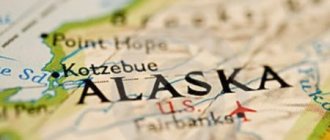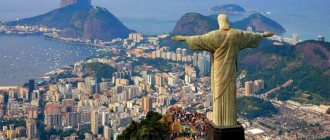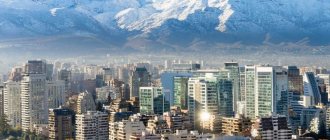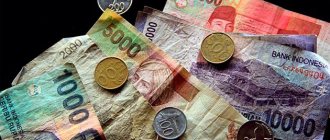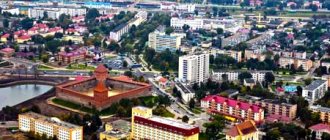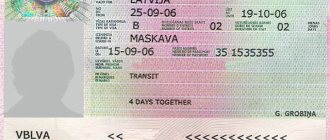Chile's population is relatively small - about 17.7 million people, about 35% live in Santiago. For tourists, the capital is more of a transit point, since only the central airport has immigration control. Then everyone flies north to the desert, south to the glaciers, or to Easter Island.
Santiago consists of 37 communes, which are independent administrative units without a single government. The cost of living, its quality, prestige and price depend specifically on the commune. The most expensive ones are located in the eastern part of Santiago - Las Condes, La Reina, Vitacura, Providence commune, Lo Barnechea. The poorest areas are in the south: La Cisterna, San Ramon, El Bosque, San Bernardo, La Pintana. The city center is the commune of Santiago.
Minimal salary
276,000 Chilean pesos
(about 27,000 rubles)
Low income
276,000 Chilean pesos
(about 27,000 rubles)
Average income
600,000–700,000 Chilean pesos
(about 60,000–70,000 rubles)
High income
over 1,000,000 Chilean pesos
(about 100,000 rubles)
Rental of property
From 250,000 pesos (25,000 rubles) per room
Santiago, like other South American capitals, is not like the city we are used to. In Moscow it is prestigious to live in the center, but in Santiago the center, on the contrary, is one of the least convenient areas in terms of infrastructure and one of the most dangerous from a security point of view. Even locals don’t risk walking here at night.
Another feature of Santiago is that multi-storey condominiums coexist with private houses. You live on the 25th floor of a modern high-rise building, but you still wake up to the sound of roosters crowing.
The advantages of a private home are obvious: an open layout, a garden with plants, your own swimming pool, and so on, with all the benefits of civilization. But high-rise buildings also have their advantages: for the most part, Santiago consists of new buildings (with the exception of the historical part of the city), and therefore everything here is adapted for the comfort of residents. Underground parking and laundries, a gym on the first or last floor, security with a concierge, often the high-rise building has its own garden with a swimming pool; as an alternative, the swimming pool is moved to the roof. Most of the roofs are terraces, where everything is suitable for spending wonderful evenings in pleasant company: barbecues, sun loungers, tables for groups, a place for dancing and often swimming pools. An additional advantage is the beautiful panoramic views of the city.
The price for rent, as well as for purchase, primarily depends on the commune. The most prestigious ones are located in the eastern part of Santiago, closer to the Andes. The second factor is area. Private houses are completely different, and here the practice is to either buy or rent a room. The apartments are generally similar in layout: they have a small kitchen, a living room (often combined with the kitchen into a studio), rooms and bathrooms. The calculation here is not based on square meters, but on the number of bedrooms and bathrooms. The most popular option is with two bedrooms and two bathrooms. In this case, one room is standard in our understanding (15–20 square meters), and the second is designed only for a bed. Most Chileans who have a two-bedroom apartment rent this room.
Chileans prefer long-term rentals, but there are also monthly options. The most popular sites for finding housing are Yapo.cl, Publiavisos.cl, airbnb.com also helped me out. On average, room rent starts from 250 thousand pesos per month (about 25 thousand rubles) both in a house and in an apartment. This includes all utility bills, often the Internet, the ability to use the entire infrastructure of the house (swimming pool, gym, laundry, terrace). I lived in the Nynoa area (Ñuñoa), it is not the most prestigious area, but it is quite safe, close to two metro lines, a park, malls, and restaurants. It is possible to find cheaper rentals, but such options are found only in the center, where the infrastructure is poorly developed and the crime rate is higher. In prestigious eastern areas, even where there is practically no infrastructure, rental costs are much higher. If you want to rent the entire apartment, you will have to pay from 500 thousand pesos (about 50 thousand rubles).
Prices for purchasing real estate also depend on the commune. The cost of a house starts from 80–100 million pesos (8–10 million rubles). For this price you can find a house with an area of about 80 square meters. In this case, there will definitely be a small garden, a parking space and a swimming pool inside. Small apartments can be found for 40-50 million pesos (4-5 million rubles), but the most popular options - with two bedrooms and two bathrooms - will cost 60-70 million pesos (6-7 million rubles).
About people. Who are the Chileans?
What can you say about people? Of course, people are different, you need to understand this. In any country in the world there is a chance to stumble upon a good person and a bad one. But here I want to talk about some of the most pronounced and characteristic features that may be inherent in the people as a whole.
In general, people are kind and sympathetic. They love children very much. With a small child, you will feel like a “beneficiary”. In stores, at the checkout counters, you will be allowed to go ahead to the state. institutions, for example, may have a separate window. It is not customary to swear and shout at children; children are allowed a lot here. The atmosphere is friendly. This is a plus.
Compared to Russia, everything here is of course very friendly and pleasant, but in this regard, it’s still unlikely that anyone will surpass Thailand, that’s why it’s a country of smiles. Well, all the same, in Chile the atmosphere of class stratification is somehow in the air. There is a certain tension, rich and poor - an eternal problem, although here it is not a problem, but simply a way of life.
Chileans are slobs. If you look at advertisements for apartments for rent, you never cease to wonder how you can live in such a mess, much less take photographs of this mess and post such advertisements on a website with rental offers. In fact, what is a mess for us is quite normal for them.
Add to this the American habit of wearing shoes at home. Well, for the life of me, I can’t understand this. From the street in shoes and on carpets, and to the sofa...
Chileans love to relax. Here you have siesta, and magnana, and all at once. Moreover, you cannot work on public holidays. If a person goes to work on a holiday, the company will be fined a tidy sum, and therefore it does not even occur to anyone to overwork in this way. It seems to me that even with the opportunity to make good money on the weekend, the Chileans themselves will prefer to relax. After Russia, this also looks unusual, but this attitude to life makes me happy.
And this... well, in general, somehow there is no order here to the extent that I imagine order in a civilized society. Let's say a situation: a red light, a crowd of Chileans looks around and runs across the street right at the red traffic light. There is a carabinieri at the traffic light, they walk past as if nothing had happened, but he won’t say a word to them. How is that?
Let's say a situation: a red light, a crowd of Chileans looks around and runs across the street right at the red traffic light. There is a carabinieri at the traffic light, they walk past as if nothing had happened, but he won’t say a word to them. How is that?
On the other hand, when the carabinieri catch violators, the places to stop are always marked with cones; this is a civil approach.
Carabinieri stopping cars
They are the same minibuses in all countries, they are reckless and God forbid. But here it is an even more extreme attraction, since all the recklessness takes place on narrow mountain streets (with a very steep slope), which often bend sharply and, in addition, pass next to some cliff. Therefore, during the next turn, you constantly have to drive away thoughts of the bus flying towards the rocky shores of the Pacific Ocean.
The country takes great care of the elderly and disabled. Without a ramp to the store, or some kind of elevator from the underground parking, the facility simply will not be allowed to open.
What do Chilean old ladies look like? It's just all upside down. Young girls often go without makeup, in baggy T-shirts, and somehow look unkempt (not always, but often). But the Chilean granny will always come with a fresh manicure, with all the required toiletry. Yes, she may not even be able to walk anymore, but be so old that they can barely carry her, but she is still beautiful and well-groomed.
Transport
10,000–100,000 pesos (1,000–10,000 rubles) per month
Transport in Santiago is poorly developed. There are metro, buses and taxis. The metro connects different parts of the city, but not all of them. It is convenient for tourists, but not for life: the depth is shallow, the ventilation systems are poorly thought out. Although there are fans in the metro halls that spray water, it is still difficult to be there during rush hour, and even just in the summer. Another disadvantage is that the metro closes at 23:00.
The fare depends on the time of day. It is divided into low load (630 pesos, or 63 rubles), medium load (680 pesos, or 68 rubles) and rush hour (760 pesos, or 76 rubles). These rates change several times during the day. To help tourists and residents, the hours of validity of a particular tariff are indicated at the ticket office and on information stands, and coupons are sold in different colors.
There are two options for paying for travel: buy travel tickets or pay for them with a special card (Tarjeta Bip), it is valid both in the metro and on the bus, there is no difference in the price for the trip. This card is an analogue of our “Troika”. It costs 1,550 pesos, but you can also purchase a personalized one (2,800 pesos) and present it as a document.
Discounts in Chile are for students only; There are none for pensioners or other categories. At the same time, getting a student benefit is quite difficult, at least for foreign students. All applications are sent to government agencies, which take about six months to sign permits, so there is no point in issuing special student cards. But if you still managed to get a benefit, then it is issued on the same Bip card. The trip costs 430, 480 or 560 pesos (43, 48 or 56 rubles, depending on the tariff).
Bus service is developed, but only on the central streets. Residential areas can only be reached by taxi or your own transport. Buses are divided into two types: long ones of different colors and small “grooves” of red color, which are called micro. I used buses in Santiago only once, since their route is understandable only to local residents. You cannot buy a ticket from the driver; you still need the same Bip card to pay, but often drivers agree to help and carry you without paying, since the card can only be bought at special kiosks. One bus ride costs about 700 pesos (70 rubles). The same applies to micro, with one exception: if you paid for travel with a metro card and later switched to micro, the money will not be debited a second time. This principle does not apply in the opposite direction or with other buses.
The residents of Santiago themselves prefer taxis, as this turns out to be the most comfortable way of transportation. There are many metered city taxis here. Among the applications, the leaders are Easy Taxi and Uber (it is, however, not officially allowed here). For example, a trip to the airport by regular taxi will cost approximately 18–20 thousand pesos (1,800–2,000 rubles), and by Uber - 15–18 thousand (1,500–1,800 rubles).
A big plus of Chile is its developed intercity bus infrastructure. Companies fight for customers, creating the best service and comfortable conditions. This also includes a bus to the airport. You will pay 1,800 pesos (180 rubles) for a 35-40 minute journey.
As for intercity transport, which runs throughout the country, there are almost no standard seats; they are either a half-bed or a bed (that is, the seat will recline completely). The service is complemented by snacks included in the ticket price and a clean dry toilet.
Bus companies often hold promotions, and therefore you can go to neighboring Valparaiso (on the ocean coast) for 7,400–8,000 pesos (740–800 rubles), which is a 1.5-hour journey. For comparison: a bus between Antofagasta and Iquique without discounts in the half-bed class can be bought for 13–15 thousand pesos (1,300–1,500 rubles), which is a 5–5.5 hour journey.
I spent almost 95 thousand pesos on transport (about 9,500 rubles) in one month, when there were especially many flights (and this is a taxi to the airport), taxi rides around the city, intercity transfers and the metro to Santiago. Most often, transportation costs did not exceed 50 thousand pesos (5 thousand rubles) per month.
It is quite easy to acquire personal transport. A used car can be bought starting from 3–4 million pesos (300–400 thousand rubles). A new one will cost from 10 million pesos (million rubles). For example, a Ford Focus Titanium costs 15 million pesos. A liter of gasoline costs about 720 pesos, diesel fuel - 530 pesos (72 and 53 rubles, respectively).
Private houses have parking, and high-rise buildings also have their own underground parking. It's just difficult to find parking on the street. There are almost no official paid parking lots, but every free lot is managed by a street boy or man - this is a fairly popular activity. He helps to park, monitors the car; There is no official tariff, but each driver gives a handful of small change, which is prudently stored in the car. Coins here are in 10, 50, 100 and 500 pesos - so the parking attendant often receives about 300-700 pesos in tips.
Features of life
The following is something that may seem strange and unusual to someone coming from Russia. Let the reader decide for himself whether to classify these traits as negative or positive. Perhaps for some they may not seem so significant.
With the traditional Chilean abundance of sunshine, large temperature changes are not uncommon. Sometimes they reach twenty degrees. It should be borne in mind that in the evening, as a rule, you should thoroughly insulate yourself. Moreover, this primarily applies to the southern regions of the country. In the north of Chile the climate is milder.
The proximity of the ocean initially inspires many visitors with hopes of a beach holiday. Alas, the ocean here is quite cold, and only the very hardened will be able to bathe in it regularly.
As in most southern countries, central heating is either absent or exists purely theoretically - but in practice it is very expensive to use it due to its high cost, so in most houses it is turned off. In the cool season (winter for Chile is the Russian summer), when the daytime temperature does not rise above 12-15 degrees, they usually use their own heaters. But in public institutions the temperature is the same as outside.
According to Russians, Chile is a fairly calm city in terms of crime. But in fact, it all depends on the area in which a person lives. In the prestigious ones - yes, basically everything is very decorous, cultured, and the carabinieri are guarding public order. The situation is completely different in areas where the population survives on $700-1000 a month. There, most often no one will worry about the safety of residents. It often happens that police simply do not want to get involved with local criminal elements.
On Sundays, the streets of the city of Chile (especially in large cities like Santiago) are empty; locals call this day “family” and spend it with their family, indulging in idleness. Even cafes and restaurants are closed.

Chile has a fairly limited selection of goods. After the huge assortment presented in the domestic retail chain and online stores, it may seem strange to Russians that most of the imported goods, due to low demand, are quite expensive and inaccessible. To tell the truth, Chile is a country that provides itself with almost everything it needs. There are always fresh fruits and vegetables, but the meat is imported (usually from Argentina). Quite rarely, ready-made dishes like salads, beloved by many in Russia, in plastic containers are on sale. Here it is customary to visit cafes and restaurants or cook yourself.
Experts in the peculiarities of renting do not advise renting an apartment on the ground floor - sometimes fleas from the street get there, and this is quite unpleasant. But there are no snakes in Chile, and this is considered a big plus.
Products
About 200,000–250,000 pesos (20,000–25,000 rubles) per month
The products in general turn out to be quite expensive. There are large supermarkets (Líder, Jumbo and others), small grocery stores, wine shops (which are open after the supermarkets close) and farmers' markets that are held on weekends (and in some communes also in the middle of the week).
Chile is famous for its wines; almost anything here will be of excellent quality. Prices for cheap wines start from 1,500 pesos (150 rubles), an average bottle of cabernet sauvignon will cost about 3 thousand pesos (300 rubles), expensive wines are sold at prices starting from 10 thousand pesos (one thousand rubles). Although the Chileans themselves prefer beer (about 600 pesos, or 60 rubles, per bottle) and pisco (strong alcohol, about 8 thousand per bottle). Wines are available both in supermarkets and specialized stores. But this does not affect the quality; wine stores only work longer and may offer a rarer assortment.
It is better to buy meat, cheeses and other products in large supermarkets, although there are also separate, fairly large butcher shops. Chicken is the cheapest, about 3 thousand pesos (300 rubles), turkey - about 4 thousand pesos (400 rubles), good Argentine beef will cost 6 thousand pesos per kilogram (600 rubles). A can of tuna - 900 pesos, a liter of ice cream - about 3,500 pesos, iceberg lettuce - 900 pesos, a kilogram of cherimoya - 900 pesos, a kilogram of tomatoes - 1,100 pesos (though the tomatoes in the supermarket are completely plastic), apples - 900-1,000 pesos per kilogram. There are also exotic things: watermelons are sold individually, not per kilogram - 2 thousand pesos; red currants - about 1,500 pesos per 150 grams.
It is still better to buy vegetables and fruits at fairs. They will be more expensive, but of much better quality. In addition, only at such fairs can you find, for example, Chilean mangoes from the northern deserts (2 thousand pesos for two kilograms).
You can save on groceries, but not significantly. You can bargain in the markets, and keep track of promotions in supermarkets. For example, a supermarket near my house sold vegetables every Friday at a 30% discount.
As for the local cuisine, there are many Peruvian influences. Pisco (a strong alcohol similar to our vodka) and ceviche (an appetizer of vegetables and raw white fish with lemon juice) are the subject of dispute between Chile and Peru. A delicious and probably truly Chilean dish is called pastel de choclo (corn pie). These are different types of fried meat, filled with corn ground in a blender and baked in the oven.
Entertainment
0–30,000 pesos (0–3,000 rubles)
Although Santiago is not the most touristy city, there are still plenty of options for how to spend a weekend. A movie ticket costs about 3,500 pesos (350 rubles, regardless of time), a trip to a restaurant costs from 15 thousand pesos per person (1,500 rubles). Lunch at a restaurant according to the daily menu usually costs about 9 thousand pesos (900 rubles).
You can also find free options. For example, the first 100 people who come to the club have the opportunity not only to dance for free all night, but also to receive one or two free piscolas (a cocktail made from pisco and cola). Most museums in Santiago are free or free until 12:00. You can climb Cerro San Cristobal for free and enjoy a beautiful panorama of the city. You can also get there faster by ski lift for about 5 thousand pesos (depending on the time and final destination).
For those who like panoramas, I advise you to go up to the observation deck of the Costanera center - 5 thousand pesos on Wednesdays, a little more on other days. This is the tallest building in Latin America, all-round panoramas, small telescopes and beautiful photographs.
Fans of active recreation can go to the mountains for a day. The Andes are just an hour's drive away, and there are three resorts near Santiago, the best of which is Valle Nevada. There are discounts from the mobile operator Entel (on some days of the week they sell two tickets for the price of one), as well as discounts for MasterCard cardholders (50% discount on equipment and clothing). Although this type of vacation is not economical. With all the discounts, a day of skiing (ski pass, clothing and ski rental) costs approximately 90 thousand pesos (9 thousand rubles). A more budget-friendly or free option for active recreation are numerous trekking trips, both in Santiago itself (Mount Manquehue, for example) and in its surroundings (Cajon del Maipo or the Colinas baths are an hour's drive away). The only expenses are gas or car rental, food and entrance to the parks (300-800 pesos per person).
On the other side of Santiago there is the coast and two cities - Viña del Mar and Valparaiso. The latter is listed as a UNESCO heritage site for its murals. This is the favorite weekend destination of all Chileans: the beach, seals, street art, dunes and sandboarding, bars and the best clubs in Chile - it's all about Valparaiso.
Advantages and disadvantages of living in Chile
Russians living in Chile have long found out everything about the positive and negative sides of life in this country.
So, first about the pros:
- pleasant oceanic climate of the southern country, a large number of sunny days, mountainous landscape, nature;
- in terms of economic indicators, this South American state occupies a leading position;
- good opportunities and fairly simple steps to obtain a work visa for migrants;
- lack of corruption and the opportunity to open your own business - a shop or pizzeria;
- A variety of prices for housing - for rent or for purchase.
However, there are also plenty of disadvantages.
- Prices. They are at the level of Moscow or even European ones here. Such so-called “basic” things as housing, medicine, gasoline and even parking are, in the opinion of many, expensive. For Russians in Chile (who have received a work permit), there is, however, free medicine through insurance, but with very long queues.
- If you don’t have the capital to start your business in the country and you are not a well-paid freelancer, you will have to look for work. First, illegal, since it may take eight months before you receive an official carnet card (carné de identidad). For illegal immigrants, labor is valued an order of magnitude lower, plus competition with other visitors;
- Bureaucrats. They are indestructible among officials and here;
- The crime rate of some areas, especially “not prestigious” ones. This also includes the fairly frequent inability or unwillingness of the police to confront crime;
- Natural beauty comes with a fairly cold ocean and seismic activity. Alas, earthquakes and Chile are compatible concepts. Although, it should be noted that all houses in this country are built in compliance with earthquake resistance conditions, so the tremors here are less sensitive than in other countries.

Miscellaneous
Souvenirs for tourists are beautiful and interesting, but one keychain will cost you 1,000–7,500 pesos (on average), a T-shirt - 14 thousand pesos. Shopping is comparable to Moscow: prices for dresses start from 15 thousand pesos (1.5 thousand rubles), jeans cost from 18 thousand pesos.
It is difficult to find good quality leather shoes, but sports lines are very common here. Thus, trekking boots from Lippi (or North Face) can be purchased for 60 thousand pesos on sale, while the regular price starts from 85 thousand. Jackets also start at 80 thousand pesos (8 thousand rubles).
The beauty industry is rather poorly developed and is represented by small salons on the ground floors of buildings or in private homes. A manicure with shellac starts from 14 thousand pesos (1.4 thousand rubles), but the maximum design you can count on is a French manicure. You can dye your hair for 30–45 thousand pesos (3–4.5 thousand rubles), get a haircut for 20–25 thousand (2–2.5 thousand rubles).
Cover: sassenfeld - stock.adobe.com


